I love creating free content full of tips for my readers, you. I don't accept paid sponsorships, my opinion is my own, but if you find my recommendations helpful and you end up buying something you like through one of my links, I could earn a commission at no extra cost to you. Learn more
Are you a passionate woodworker who is feeling the need for a planer and jointer in your small workshop? Or are you just a minimalist who likes the exceptionally versatile tools? Well, no matter what the case is for you, what you require is a jointer planer combo machine.
However, we struggled a lot to get the best jointer planer combo for our small workshop. We first purchased something average at best. But through this article, we will ensure that you do not have the same experience as us.
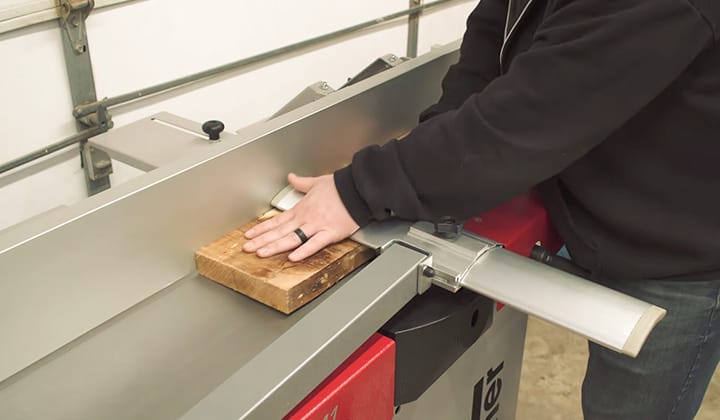 How will we do that? When we gave these combos a second chance, we had hands-on experience with the most popular models. And we have a clear idea regarding which one is worth it and which is not at this moment.
How will we do that? When we gave these combos a second chance, we had hands-on experience with the most popular models. And we have a clear idea regarding which one is worth it and which is not at this moment.
In this post we'll cover:
Benefits of Jointer Planer Combo
Before we move into describing the models that caught our eyes, we would like to ensure you have a fair idea of the advantages you can expect. And they are:Value for the Money
Firstly, separately purchasing a good jointer and planer will cost you a good amount of money. In comparison, if you can get a combo that performs well, you will be saving yourself quite a chunk of money. The well-performing ones usually offer an insane value proposition.Space Saving
The space-saving nature of these machines has solved the problem we were facing in our workshop. It was pretty much impossible for us to accommodate a separate jointer and planner. But these combos eliminated the issue.Easy to Maintain
If you have a separate jointer and planer, you need to maintain two different machines. Now, as busy woodworkers, we value our time the most. We believe the case is the same for most of the carpenters as well. Nonetheless, after getting one of these combos, you just need to worry about one machine, not two. That will make the maintenance task around the workshop more effortless and hassle-free.7 Best Jointer Planer Combo Reviews
We must admit that loads of combos out there will claim to offer an insane amount of performance. But most of them provide sub-par performance in reality. So, when we scrutinized and tested the options, we kept all of the essential factors in mind. And these are the ones that seemed worthy of getting to us:JET JJP-8BT 707400
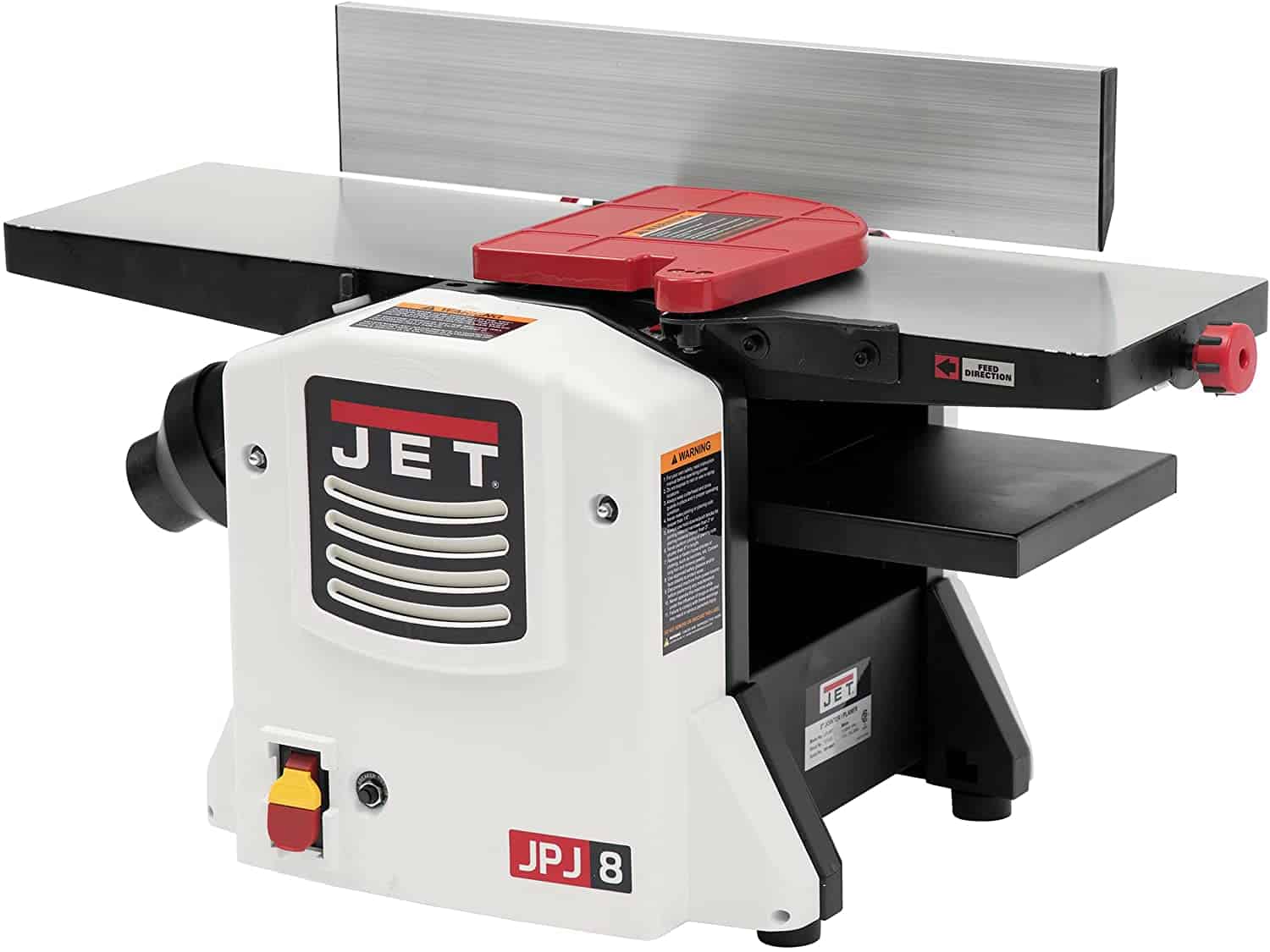 While working with projects, most woodworkers and carpenters focus on precision. And that is what JET has emphasized in this offering.
The unit features a large aluminum fence. Due to the extruded nature of the fence, the machine achieves a higher amount of stability. It remains pretty much still while being operational. And that will ensure you can get precise results on the projects and workpieces.
It is exceptionally compact too. The combination sports both a planer and jointer but has a small form factor. For that reason, it will be easier to store and accommodate it in small spaces. The compact footprint will also make it easier to carry and move around.
This combo also integrates a cord wrap. That will make the task of transporting the machine around a breeze. It will also enhance the overall safety and make it easier to operate the machine. Also, it boasts a heavy-duty motor. It has a 13 amp rating and is suitable for a wide range of cutting applications.
You will not face any discomfort while operating the machine either. It has ergonomic knobs, which will offer the maximum amount of comfort. The knobs are reasonably large too. As a result, you are sure to get a high amount of control.
Pros
While working with projects, most woodworkers and carpenters focus on precision. And that is what JET has emphasized in this offering.
The unit features a large aluminum fence. Due to the extruded nature of the fence, the machine achieves a higher amount of stability. It remains pretty much still while being operational. And that will ensure you can get precise results on the projects and workpieces.
It is exceptionally compact too. The combination sports both a planer and jointer but has a small form factor. For that reason, it will be easier to store and accommodate it in small spaces. The compact footprint will also make it easier to carry and move around.
This combo also integrates a cord wrap. That will make the task of transporting the machine around a breeze. It will also enhance the overall safety and make it easier to operate the machine. Also, it boasts a heavy-duty motor. It has a 13 amp rating and is suitable for a wide range of cutting applications.
You will not face any discomfort while operating the machine either. It has ergonomic knobs, which will offer the maximum amount of comfort. The knobs are reasonably large too. As a result, you are sure to get a high amount of control.
Pros
- Sports a large aluminum fence
- Remains highly stable
- Compact and highly portable
- It relies on a heavy-duty motor
- Comfortable and easy to work with
- Does not have a co-plainer in-feed and out-feed
- The jack screws are a bit wobbly
Rikon 25-010
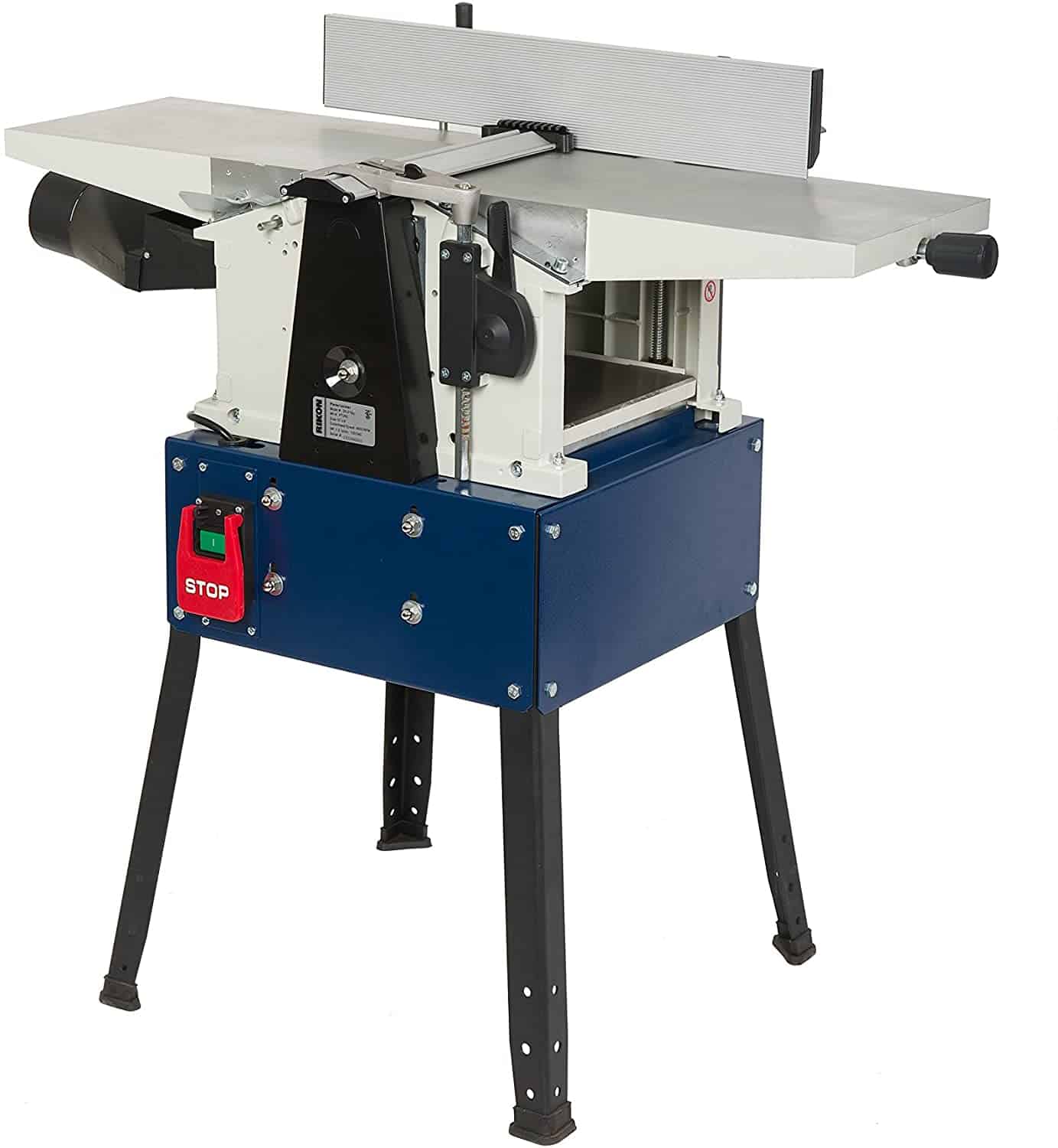 While most of the jointer planer combos are reasonably compact, not all of them are that durable. Well, Rikon had factored that in when they were manufacturing this unit for the market.
This machine features the construction of cast aluminum. This material makes the whole thing achieve higher overall durability. It will be able to withstand heavy workshop abuse and workloads. You can expect this one to last for an extended amount of time.
There is a four-inch dust port on the working table. It is 4 inches in size and can properly suck dust from the area. The port also ensures excellent overall airflow. As a result, the active workspace will remain free from dust and debris when working with the workpiece on the combo machine.
It utilizes a reasonably competent motor as well. The power rating is 1.5 HP. As the motor is an induction motor, it will be able to handle heavy workloads like they are nothing. The cutting capacity you will get is 10 inches by 6 inches, and it can offer up to 1/8 inches depth of cut.
The machine also has a mechanism to minimize the overall vibration. It transfers the power to the cutter head by using a cut ribbed J-belt. That will make sure that the machine is stable while you are handling workpieces on top of it.
Pros
While most of the jointer planer combos are reasonably compact, not all of them are that durable. Well, Rikon had factored that in when they were manufacturing this unit for the market.
This machine features the construction of cast aluminum. This material makes the whole thing achieve higher overall durability. It will be able to withstand heavy workshop abuse and workloads. You can expect this one to last for an extended amount of time.
There is a four-inch dust port on the working table. It is 4 inches in size and can properly suck dust from the area. The port also ensures excellent overall airflow. As a result, the active workspace will remain free from dust and debris when working with the workpiece on the combo machine.
It utilizes a reasonably competent motor as well. The power rating is 1.5 HP. As the motor is an induction motor, it will be able to handle heavy workloads like they are nothing. The cutting capacity you will get is 10 inches by 6 inches, and it can offer up to 1/8 inches depth of cut.
The machine also has a mechanism to minimize the overall vibration. It transfers the power to the cutter head by using a cut ribbed J-belt. That will make sure that the machine is stable while you are handling workpieces on top of it.
Pros
- Constructed of cast aluminum
- Compact yet highly durable
- It has a 4 inches dust port
- Utilizes a 1.5 HP motor
- Stable and has a praiseworthy cutting capacity
- The assembly directions are a bit vague
- It does not have an adjustable in-feed table
Jet Tools 707410
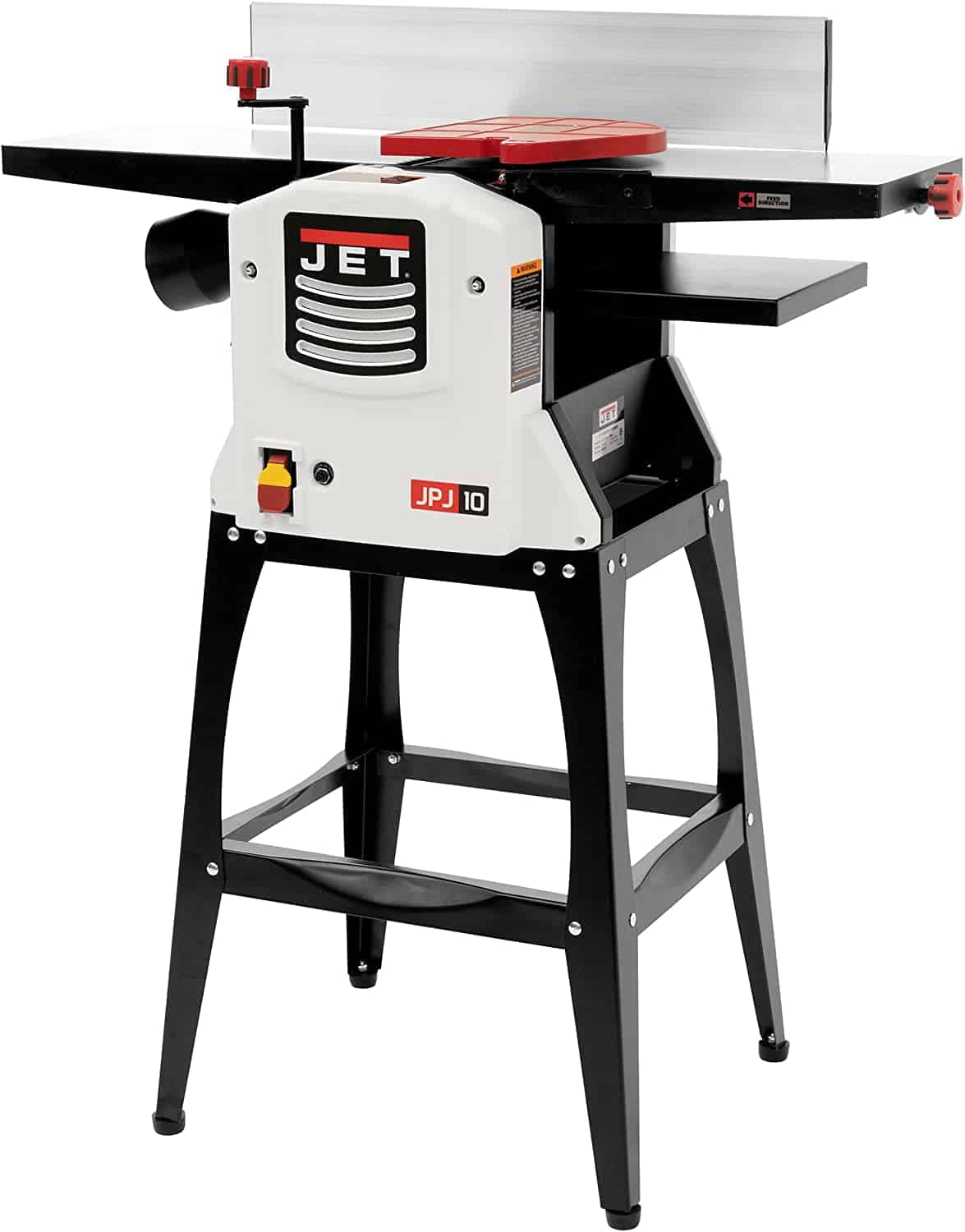 The manufacturer Jet indeed has an extensive lineup of recommendation-worthy tools. And this is yet another example of that.
One of the things that makes it so worthy is the faster speed of the motor. It has a 13 amp rating and can offer robust performance on different cutting tasks. That is paired up with two steel knives. As a result, the whole combo achieves a cutting speed of 1800 cuts per minute.
The blades are highly capable too. They have a maximum cutting width of 10 inches and can offer cuts that are up to 1/8 inches. The planer has a cutting depth of 0.08 inches, which is praiseworthy as well. Due to the stable nature of the machine, you are sure to get accurate and precise cuts.
It has a steel stand that makes the whole thing exceptionally versatile. You can transform the machine from standing to bench configuration within a matter of minutes. There are a couple of adjustment mechanisms present too. It is possible to change the height of the out-feed to get further control over the operation.
This machine also has a unique design. The design that it sports reduces the number of snipes. That will eventually offer you consistent results on each of the workpieces. It also has ergonomic knobs, which are easy to hold and work with. The oversized nature of them will offer a maximum amount of control.
Pros
The manufacturer Jet indeed has an extensive lineup of recommendation-worthy tools. And this is yet another example of that.
One of the things that makes it so worthy is the faster speed of the motor. It has a 13 amp rating and can offer robust performance on different cutting tasks. That is paired up with two steel knives. As a result, the whole combo achieves a cutting speed of 1800 cuts per minute.
The blades are highly capable too. They have a maximum cutting width of 10 inches and can offer cuts that are up to 1/8 inches. The planer has a cutting depth of 0.08 inches, which is praiseworthy as well. Due to the stable nature of the machine, you are sure to get accurate and precise cuts.
It has a steel stand that makes the whole thing exceptionally versatile. You can transform the machine from standing to bench configuration within a matter of minutes. There are a couple of adjustment mechanisms present too. It is possible to change the height of the out-feed to get further control over the operation.
This machine also has a unique design. The design that it sports reduces the number of snipes. That will eventually offer you consistent results on each of the workpieces. It also has ergonomic knobs, which are easy to hold and work with. The oversized nature of them will offer a maximum amount of control.
Pros
- The motor is reasonably fast
- It has a maximum cutting width of 10 inches
- Exceptionally stable
- Features a unique design
- Integrates ergonomic and oversized knobs
- The blade holder is not placed correctly
- It has plenty of small parts that are not that easy to work with
Grizzly G0675
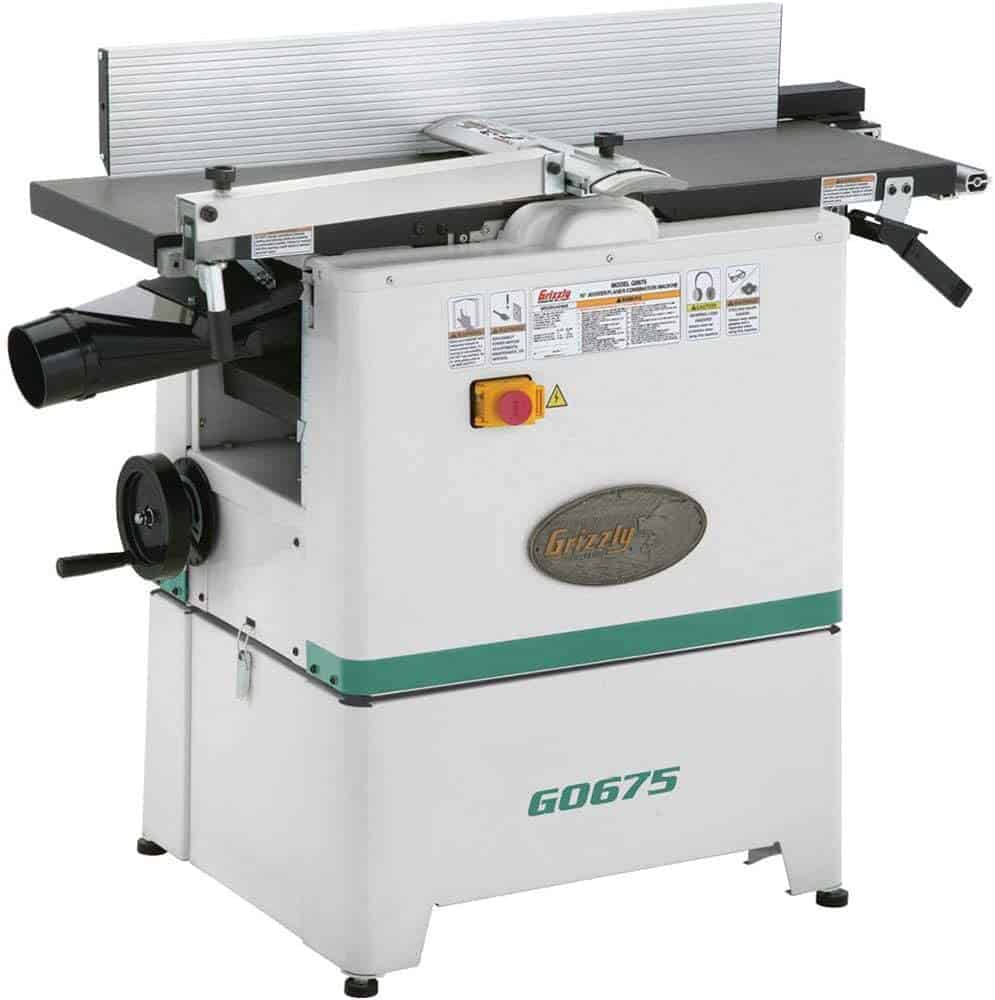 You might have already heard about Grizzly. No, we are not talking about the bears. Instead, what we are referring to is the power tool manufacturer. They have a pretty good lineup of jointer and planer combo as well. This one is an excellent example of how good their offerings usually are.
Firstly, the overall construction of the machine is highly praiseworthy. The manufacturer has opted for high-quality materials, which enhances the overall durability. It will be capable of handling heavy workloads and will last for a long time without showing any performance issues.
There are a good amount of adjustable systems present too. Those are easy to access and will enable you to tune the entire operation finely. It has adjustable gab plates as well. The gab plates are accompanied by head sliding rails. Those will make the task of handling projects easier.
The machine also features an excellent overall design. It has proper support on the base. As a result, the stability of the whole thing is reasonably high. That will eventually mean accurate cuts. It also has a proper system to mitigate the vibrations. So, you will not have to worry about wobbling at all.
Its form factor is reasonably compact too. This compact trait makes it easier to store, accommodate and move the device around.
Pros
You might have already heard about Grizzly. No, we are not talking about the bears. Instead, what we are referring to is the power tool manufacturer. They have a pretty good lineup of jointer and planer combo as well. This one is an excellent example of how good their offerings usually are.
Firstly, the overall construction of the machine is highly praiseworthy. The manufacturer has opted for high-quality materials, which enhances the overall durability. It will be capable of handling heavy workloads and will last for a long time without showing any performance issues.
There are a good amount of adjustable systems present too. Those are easy to access and will enable you to tune the entire operation finely. It has adjustable gab plates as well. The gab plates are accompanied by head sliding rails. Those will make the task of handling projects easier.
The machine also features an excellent overall design. It has proper support on the base. As a result, the stability of the whole thing is reasonably high. That will eventually mean accurate cuts. It also has a proper system to mitigate the vibrations. So, you will not have to worry about wobbling at all.
Its form factor is reasonably compact too. This compact trait makes it easier to store, accommodate and move the device around.
Pros
- Made of high-quality materials
- Capable of handling heavy workloads
- It has plenty of adjustable mechanisms
- Features an excellent overall design
- Compact
- The motor is a bit underpowered
- It does not have that high cutting capacity
Rikon 25-010
 Want to opt for something that can mitigate vibration exceptionally well? Well, we might have found the one that you have been looking for all this time. And yes, it is from Rikon.
Let us first talk about the thing that makes it so special. It has a ribbed drive belt. This J-belt will minimize the overall vibration and will make sure that the combo operates while being stable. For that reason, you can expect to get accurate and precise cuts while handling workpieces on this.
The build quality of the combo is pretty praiseworthy. It is entirely cast aluminum, which increases its durability. However, as the machine is made of aluminum, the weight is reasonably low. This low weight will make it easier to transport and carry the tool around.
There is a dust port present as well. The port is 4 inches in size and can properly suck air from the table. As a result, you will be able to work with a spotless workspace. It also provides good airflow. So, the cleaning task after you are done working with the machine will be pretty much hassle-free.
It even utilizes a potent motor. It has a 1.5 HP power rating and can offer a cutting capacity of 10 x 16 inches. The maximum depth of cut is 1/8 inches, which is praiseworthy as well.
Pros
Want to opt for something that can mitigate vibration exceptionally well? Well, we might have found the one that you have been looking for all this time. And yes, it is from Rikon.
Let us first talk about the thing that makes it so special. It has a ribbed drive belt. This J-belt will minimize the overall vibration and will make sure that the combo operates while being stable. For that reason, you can expect to get accurate and precise cuts while handling workpieces on this.
The build quality of the combo is pretty praiseworthy. It is entirely cast aluminum, which increases its durability. However, as the machine is made of aluminum, the weight is reasonably low. This low weight will make it easier to transport and carry the tool around.
There is a dust port present as well. The port is 4 inches in size and can properly suck air from the table. As a result, you will be able to work with a spotless workspace. It also provides good airflow. So, the cleaning task after you are done working with the machine will be pretty much hassle-free.
It even utilizes a potent motor. It has a 1.5 HP power rating and can offer a cutting capacity of 10 x 16 inches. The maximum depth of cut is 1/8 inches, which is praiseworthy as well.
Pros
- There is a ribbed drive belt
- Sports an excellent build quality
- Weighs reasonably low
- It has a dust port
- Boasts a 1.5 HP motor
- It does not ship with a proper assembly guide
- There is no proper locking mechanism present on the table
Grizzly G0634XP
 Although there are many combos with reasonably powerful motors available in the market, only a few boast an insanely highly powered motor. Well, this offering from Grizzly is one of them.
As we have mentioned, it sports a 5 HP motor. The motor has a single-phase design and operates at 220 volts. Due to how powerful the motor is, the machine can make the blade rotate at a staggering 3450 RPM. Also, it has a magnetic switch, which will make the task of controlling the motor a breeze.
Although there are many combos with reasonably powerful motors available in the market, only a few boast an insanely highly powered motor. Well, this offering from Grizzly is one of them.
As we have mentioned, it sports a 5 HP motor. The motor has a single-phase design and operates at 220 volts. Due to how powerful the motor is, the machine can make the blade rotate at a staggering 3450 RPM. Also, it has a magnetic switch, which will make the task of controlling the motor a breeze.
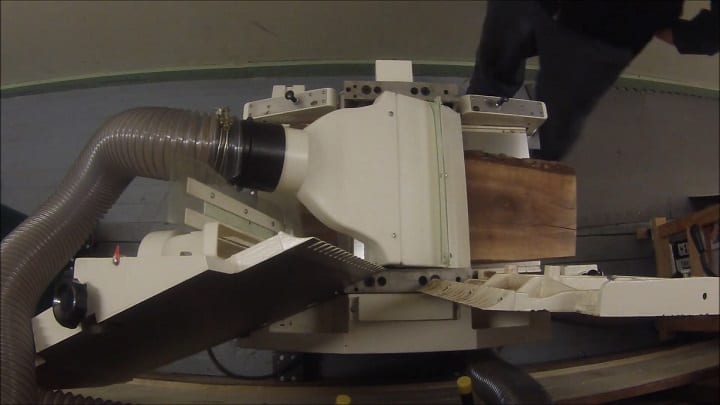
- Boasts a 5 HP motor
- The cutter head can spin at 5034 RPM
- It has a comparatively large table
- Features quick-releasing mounting mechanism
- Sports four inches dust port
- The drive assembly slips a bit
- It does not come with a proper user manual
JET JJP-12HH 708476
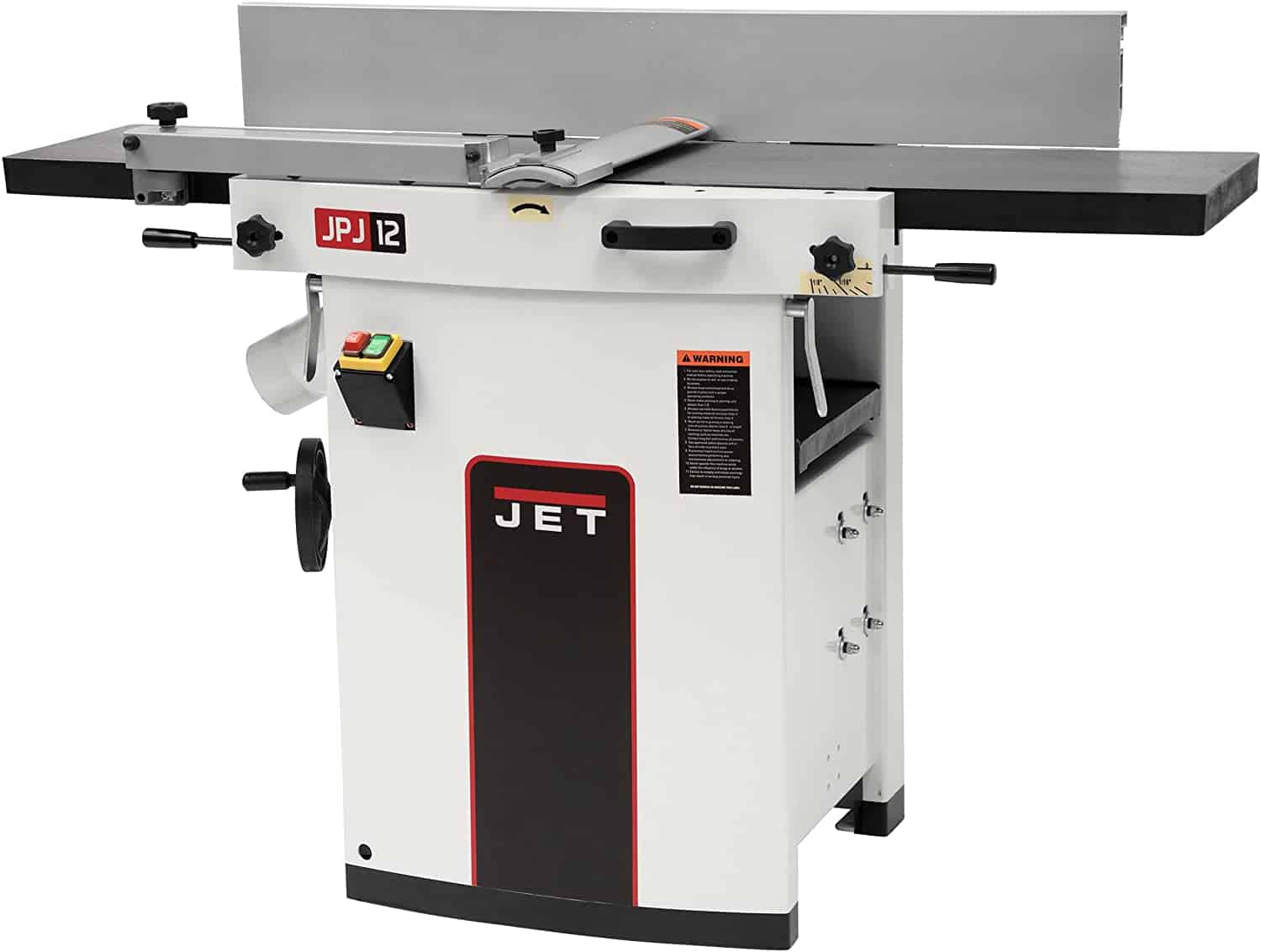 Yes, we are covering yet another product from JET. But we cannot help it. Jet does have an extensive lineup of products that are worthy of recommendation. And like the previous ones we covered, this machine has a lot to offer.
It utilizes a reasonably powerful induction motor. The motor has a 3 HP rating and runs smoothly even under heavy load. As it is an induction motor, it will not throttle that much either. You will be looking to get a consistent performance throughout its lifespan.
Talking of consistency, it is exceptionally precise. A large hand wheel will allow you to make quick and easy adjustments on the planer table. It even offers the ability to make micro-adjustments. For that reason, it will undoubtedly be possible to get accurate tuning on the workpieces.
The machine is extremely stable too. It is constructed of heavy-duty materials. And the one-piece steel stand will offer a maximum amount of stability when you are working with projects on it. It also includes mounting tabs, which will increase the overall control.
This combo relies on a Helical cutter head. It also has 56 indexable inserts that are of carbide. Because of that, the machine will offer a superior finish without making too much noise during operation.
Pros
Yes, we are covering yet another product from JET. But we cannot help it. Jet does have an extensive lineup of products that are worthy of recommendation. And like the previous ones we covered, this machine has a lot to offer.
It utilizes a reasonably powerful induction motor. The motor has a 3 HP rating and runs smoothly even under heavy load. As it is an induction motor, it will not throttle that much either. You will be looking to get a consistent performance throughout its lifespan.
Talking of consistency, it is exceptionally precise. A large hand wheel will allow you to make quick and easy adjustments on the planer table. It even offers the ability to make micro-adjustments. For that reason, it will undoubtedly be possible to get accurate tuning on the workpieces.
The machine is extremely stable too. It is constructed of heavy-duty materials. And the one-piece steel stand will offer a maximum amount of stability when you are working with projects on it. It also includes mounting tabs, which will increase the overall control.
This combo relies on a Helical cutter head. It also has 56 indexable inserts that are of carbide. Because of that, the machine will offer a superior finish without making too much noise during operation.
Pros
- Boasts a powerful induction motor
- It offers a high amount of accuracy
- Remains highly stable during operation
- The build is of heavy-duty materials
- Operates quietly
- The product may arrive with damaged parts
- It does not arrive with factor calibration
Things to Consider Before Buying
You might be wondering about the things we considered while scrutinizing and testing the jointer planer combos. Well, these are the things we factored in:Form Factor and Heft
The main reason behind getting a jointer planer is to save some room space, right? If you happen to get something larger than two of the tools combined, would you be able to get the crucial benefit these combos are offering? Not really! For that reason, you need to consider the form factor before making a purchase. Secondly, weight plays a vital role in terms of transportation and mobility. The lighter the combo, the easier it will be to carry it around. Also, it will be easy to move the machine from one workspace to another. Considering that, we would highly recommend opting for something light in weight.Type of the Stand
Alongside the form factor and the weight, consider the stand type. There are three types available out there. Open, closed, and the machines that fold down. Each one of them has its weaknesses and strength. First, the open stands! They are more like tables that have shelves on them. The storage boxes can surely come in handy if you want to keep some tools close by while you work with the projects. These will allow you to save some space in your workshop further. On the other hand, there are closed ones. These are comparatively expensive than the open units. Also, as these will generally have a one-piece construction, they will be reasonably durable than the open versions. Lastly, there are foldable ones. These are usually used on top of a stand or a bench. As these do not have a built-in stand, you will be able to place them in different places instead of setting them permanently in one place.Cutting Depth and Width of the Bed
It would help if you also considered the cutting depth and the width of the bed. It dictates the speed at which the blade removes the materials from the project. In other words, the higher the cutting depth, the quicker you will be able to complete a specific task. The width of the bed determines the size of the workpieces the machine is capable of accommodating. Some machines will have a dedicated bed for planing and jointing operations, while some will have separate beds. For both cases, opt for the size that suits your needs.Motor
The motor is the most crucial part of the combo. In this case, the higher the power of the motor, the better the performance you will obtain. The lowest power available for these machines is 1 HP. But that amount is only enough for hobbyist that intends to use the machine to work on softwoods. But if you are purchasing one of these, you would want it to get the most out of it, right? For that reason, we would recommend opting for something with at least 3 HP or more power. With those, you will be able to work on both demanding and less demanding projects effectively.Dust Collector
Lastly, consider the dust collector (like one of these). A combo that does not have a dust collector demands manual cleaning. And you might even have to clean the upper surface multiple times while working with a workpiece, which will slow you down. So, we would highly suggest getting a combo that has a dust collector. Make sure that the dust port is reasonably large and it can offer the proper airflow to accumulate all the dust properly in one place.Frequently Asked Questions
- Are jointers and planers the same thing?
- Is it possible to plane wooden workpieces with a jointer?
- Can I flatten a wooden piece with a planer?
- How big is a jointer planer combo?
- Are jointer planer combos portable?
Final Words
We saved quite an amount of room space after getting the best jointer planer combo. And the great part is that we had to make little to zero sacrifices by getting a combo. Nonetheless, we can assure you that each of the models we have reviewed in this article will offer you the same experience that we are having with our one. So, you can pick one without overthinking.I'm Joost Nusselder, the founder of Tools Doctor, content marketer, and dad. I love trying out new equipment, and together with my team I've been creating in-depth blog articles since 2016 to help loyal readers with tools & crafting tips.
